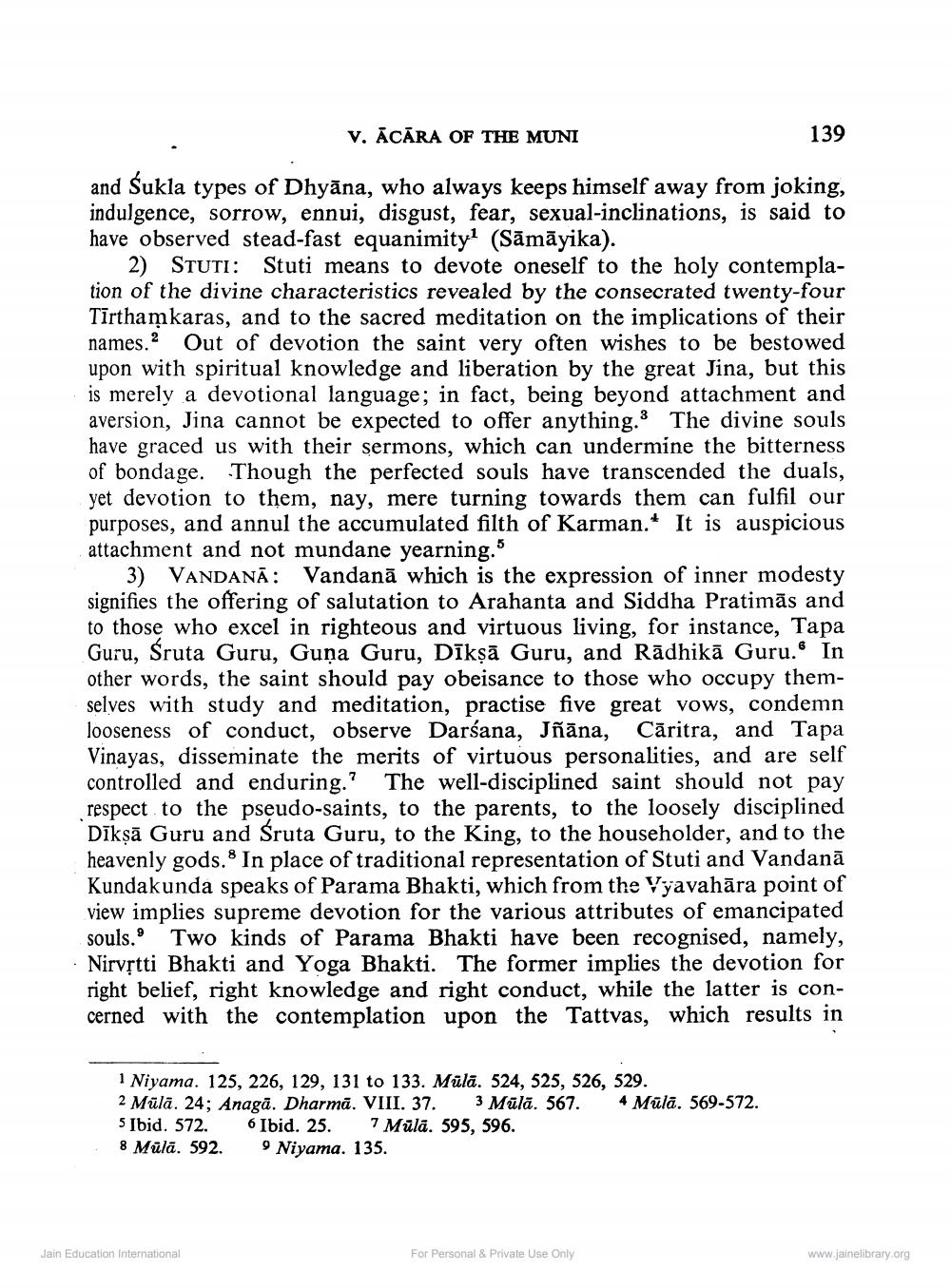________________
v. ĀCĀRA OF THE MUNI
139
and Sukla types of Dhyāna, who always keeps himself away from joking, indulgence, sorrow, ennui, disgust, fear, sexual-inclinations, is said to have observed stead-fast equanimity? (Sāmāyika).
2) STUTI: Stuti means to devote oneself to the holy contemplation of the divine characteristics revealed by the consecrated twenty-four Tīrthamkaras, and to the sacred meditation on the implications of their names.? Out of devotion the saint very often wishes to be bestowed upon with spiritual knowledge and liberation by the great Jina, but this is merely a devotional language; in fact, being beyond attachment and aversion, Jina cannot be expected to offer anything. The divine souls have graced us with their sermons, which can undermine the bitterness of bondage. Though the perfected souls have transcended the duals, yet devotion to them, nay, mere turning towards them can fulfil our purposes, and annul the accumulated filth of Karman. It is auspicious attachment and not mundane yearning.“
3) VANDANĀ: Vandanā which is the expression of inner modesty signifies the offering of salutation to Arahanta and Siddha Pratimās and to those who excel in righteous and virtuous living, for instance, Tapa Guru, Sruta Guru, Guna Guru, Dīksā Guru, and Rādhikā Guru. In other words, the saint should pay obeisance to those who occupy themselves with study and meditation, practise five great vows, condemn looseness of conduct, observe Darśana, Jñāna, Căritra, and Tapa Vinayas, disseminate the merits of virtuous personalities, and are self controlled and enduring.? The well-disciplined saint should not pay respect to the pseudo-saints, to the parents, to the loosely disciplined Dīksā Guru and Śruta Guru, to the King, to the householder, and to the heavenly gods.8 In place of traditional representation of Stuti and Vandanā Kundakunda speaks of Parama Bhakti, which from the Vyavahāra point of view implies supreme devotion for the various attributes of emancipated souls. Two kinds of Parama Bhakti have been recognised, namely, Nirvrtti Bhakti and Yoga Bhakti. The former implies the devotion for right belief, right knowledge and right conduct, while the latter is concerned with the contemplation upon the Tattvas, which results in
1 Niyama. 125, 226, 129, 131 to 133. Müla. 524, 525, 526, 529. 2 Mülā. 24; Anagā. Dharmā. VIII. 37. 3 Mūlā. 567. 4 Müla. 569-572. 5 Ibid. 572. 6 Ibid. 25. 7 Mula. 595, 596. 8 Mülā. 592. Niyama. 135.
Jain Education International
For Personal & Private Use Only
www.jainelibrary.org




